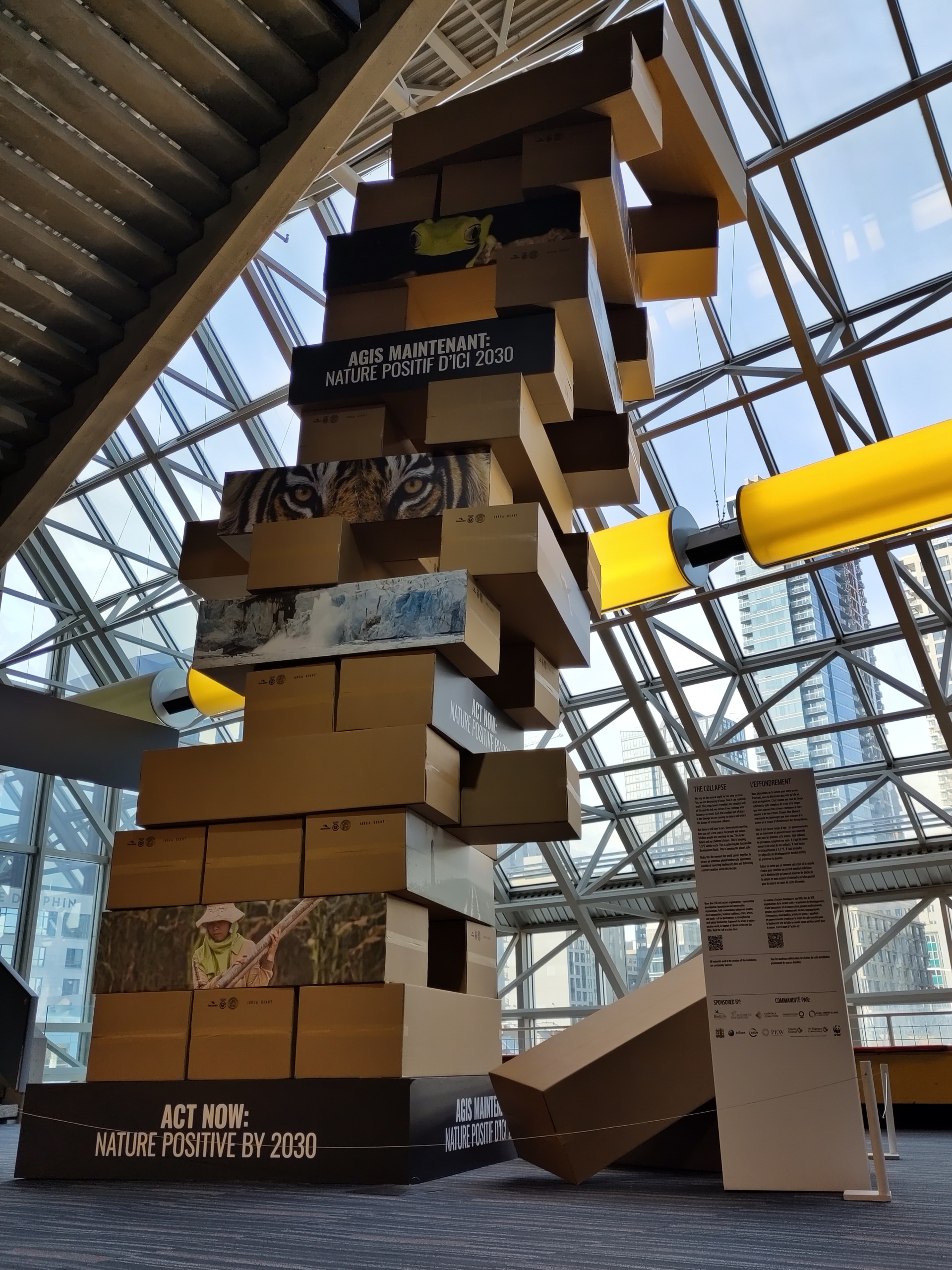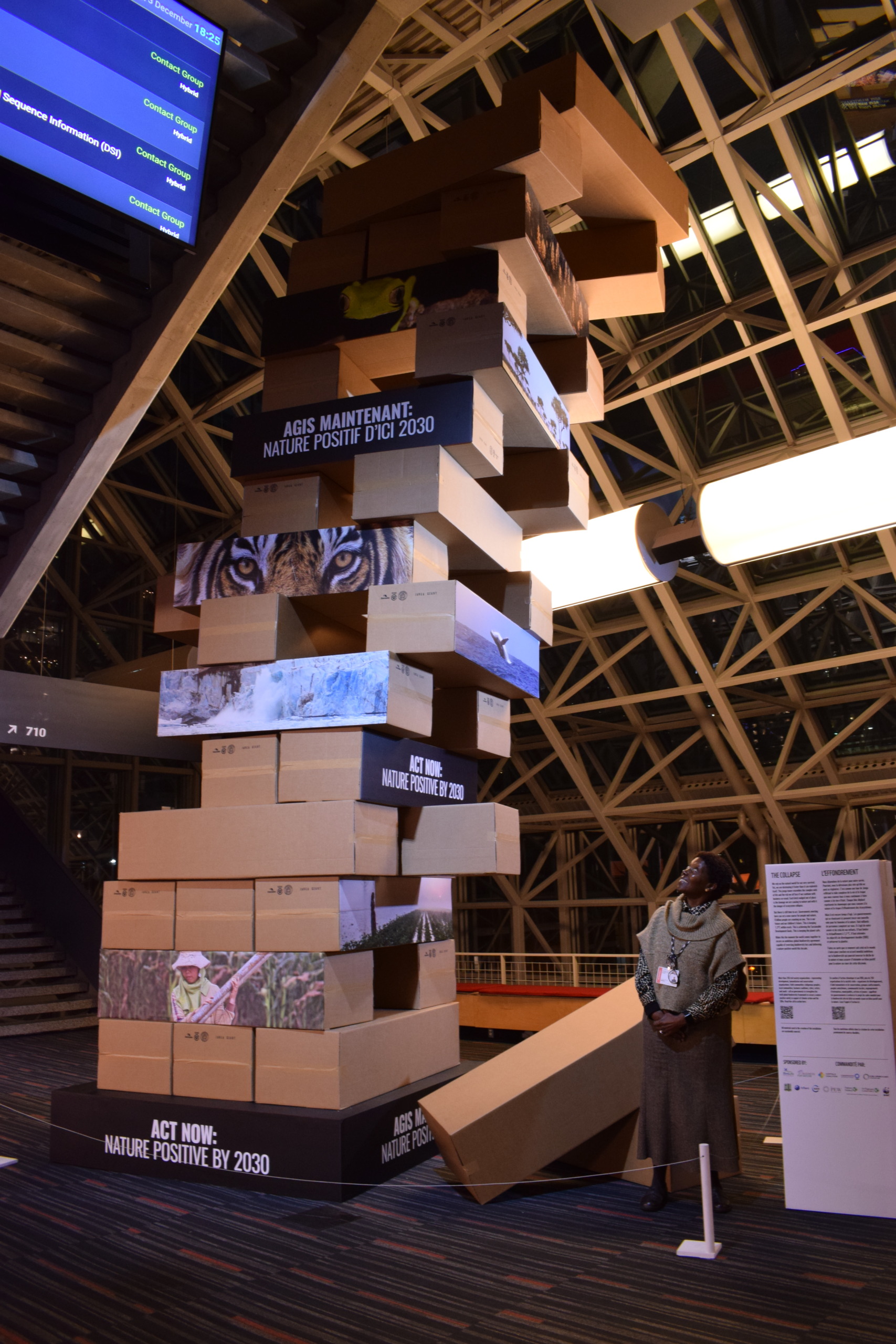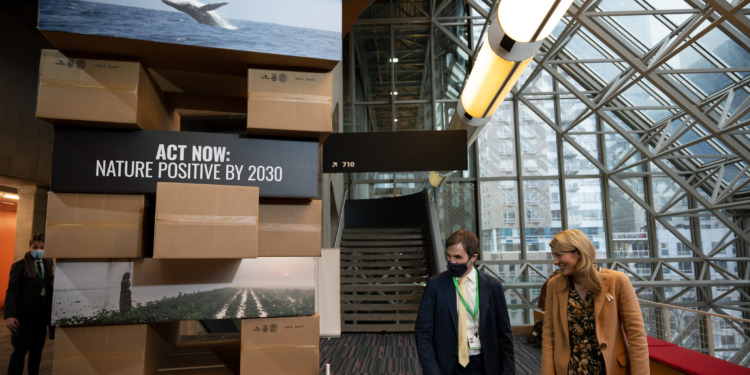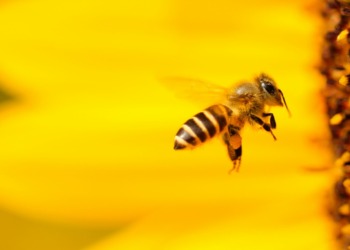A giant Jenga tower is on display at “The Palais des congrès de Montréal,” where the UN biodiversity conference (COP15) is taking place this week (December 7-19).
“This Jenga represents the dangerous game we play with biodiversity. We are watching the accelerated destruction of the natural world; every brick we pull out increases the risk of total collapse. However, unlike the popular game, we won’t be able to pick up the pieces and place them neatly back in a box, it’ll be too late,” says Andrew Deutz, Director of Global Policy at The Nature Conservancy.

The installation, made of recycled cardboard boxes, resembles the complex web of life and the risk we all face if we continue with a business-as-usual approach to our relationship with nature. Each brick nudged out of place represents the precarious position we put our planet in, with each species lost, ecosystem degraded and livelihood ruined because of human-caused damage to biodiversity.
“The jenga tower serves as a stark reminder to delegates in Montreal of the very life support systems we all rely on. By removing the foundational building blocks of nature, we risk destroying our societies and humankind. But there is still time to act. Governments meeting in Montreal this week can set a new course for our future and our children’s future. COP15 must be the moment the world comes together to secure an ambitious global biodiversity agreement, capable of reversing nature loss and delivering a nature-positive world this decade,” said WWF Director-General Marco Lambertini.
Related Articles: Over Two-Thirds of Wildlife Lost in Less Than a Lifetime | A Natural Path to Conflict Prevention: Unpacking the Nature–Security Nexus | EU Unveils Law to Halt Biodiversity Loss and Improve Food Systems
The Jenga tower has been installed by the Nature Positive pavilion, located in exhibition room 220B at COP15, and is supported by BirdLife, Business for Nature, Capitals Coalition, Conservation International, Global Commons Alliance, Infrastructure and Nature Coalition, InTent, IUCN, The Nature Conservancy, Pew, and WWF.
The installation aims to highlight the call from more than 350 civil society organisations — representing humanitarian, development and conservation organisations; faith groups; indigenous peoples; business coalitions; artists; youth; and more — for governments to strengthen the draft global biodiversity framework to secure a nature-positive world by 2030, in support of climate action and the SDGs.
“Unlike a round of jenga, the biodiversity crisis is not a game we can afford to lose. Nature provides everything our societies and economies are built upon, yet we are dangerously close to bringing down this complex, life-sustaining system,” says Eva Zabey, Executive Director of Business for Nature. “This COP offers an unmissable opportunity for governments to agree to a Paris-style goal for nature that mobilizes all parts of society towards halting nature loss this decade.”

Editor’s Note: The opinions expressed here by the authors are their own, not those of Impakter.com — In the Featured Photo: Canadian Environment Minister Steven Guilbeault in front of the Jenga tower at COP15. Featured Photo Credit: Holly Chapman.










